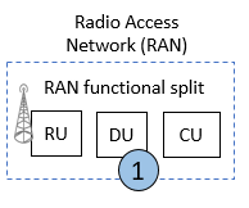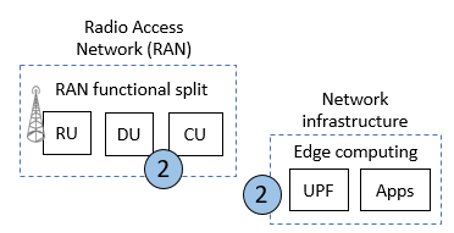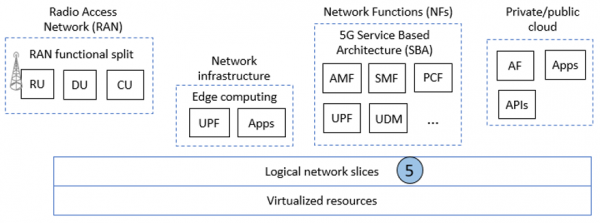In the last decade, there has been an explosive growth in demand for cellular and Wi-Fi connectivity. This growth has primarily been driven by advancements in mobile devices, in particular the smartphone and laptops. Many are speculating that the next wireless growth area will be private networks.
Private networks are cellular networks deployed in a shared frequency band. In shared frequency bands, spectrum usage is coordinated between different spectrum users to avoid interference, allowing private networks to offer the same reliability as a traditional cellular network. Private networks are also more affordable as they do not require expensive spectrum licenses.
The latest cellular network standard, 5G, defines a flexible system architecture that supports very diverse and demanding use cases. While 5G continues to improve the mobile broadband user experience, 5G also supports low power and low data rate IoT connections. In addition, 5G supports vertical applications such as time-sensitive industrial control, and high-reliability autonomous vehicles. 5G private networks provide organizations with reliable coverage and the capability to solve problems that are unique to their market.
Intel is working with the industry to demonstrate the viability of a 5G network based on cloud-related technologies. The success of companies like Intel to drive this transition will determine how quickly the private network market will grow in the coming years. Key Intel initiatives include:
- Intel FlexRAN enables the virtualization of the Radio Access Network (RAN).
FlexRANTM is a 4G and 5G reference design started by Intel that assists software developers in implementing a software-defined RAN. A software-defined RAN based on FlexRAN provides the distributed unit (DU) physical layer functionality. Figure 1 illustrates where FlexRAN fits within the 5G network architecture.

Figure 1: FlexRANTM provides a reference design for the DU physical layer
The primary value of a reference architecture is the building blocks that assist developers in optimizing diverse RAN traffic workloads. There are four main building blocks: a software development kit (SDK) with kernels optimized for the Intel architecture (IA) instruction set, a task controller for distributing tasks across multiple cores, a front-end gateway for terminating the physical network layer, and a network slicing framework to allow the developer’s software to utilize sliceable IA components. These building blocks run on a network functions virtualization infrastructure (NFVI) with a real-time Linux-based operating system (OS). The NFVI runs on Intel’s scalable processors, network cards, and acceleration components.
- Intel® Smart Edge enables packet process and analysis at the network edge.
Intel® Smart Edge is an edge computing platform that onboards and manages network functions (NFs) and applications. The Smart Edge platform is optimized specifically for the demands of edge computing in terms of throughput, latency, and determinism. Intel Smart Edge supports both deployments at the network edge and the on-premise edge.
Smart Edge runs on an open cloud environment that includes Kubernetes, enabling it to run on cloud clusters. Figure 2 illustrates where the Intel Smart Edge fits within the 5G network architecture.

Figure 2: Intel Smart Edge provides a converged mobile edge computing platform
There are two Intel Smart Edge offerings, Intel® Smart Edge Open and Smart Edge Commercial:
- Intel® Smart Edge Open provides infrastructure developers with the build blocks and reference architectures to assist them in building commercial cloud-native edge platforms. Examples of Intel® Smart Edge Open building blocks include 5G microservices to steer traffic to edge applications, edge multi-cluster orchestration, resource management, and accelerators. Individual reference architectures support different use cases, including cloud-native, 5G RAN, 5G user plane functions (UPF), and SD-WAN.
Intel® Smart Edge Open also includes an SDK. The SDK integrates with other Intel technologies, including FlexRAN, allowing system integrators to converge multiple workloads on their edge platforms. In other words, an organization can run 5G DU, CU, and MEC applications on the same converged edge platform. - Smart Edge Commercial is a hardened and deployable software build that combines the building blocks with the “converged edge” reference architecture. Organizations looking for an off-the-shelf platform to deploy applications and services at the network edge would use Smart Edge Commercial.
Smart Edge also includes reference implementations for specific use cases. These reference implementations include preconfigured software to build sample applications. Application developers can leverage Smart Edge Commercial with the SDK and reference implementations to develop applications, demonstrations, and trials.
- Intel FlexCore enables virtualization of the User Plane Function (UPF)
Intel FlexCore is a 5G reference design that assists in developing the User Plane Function (UPF). The UPF is the only 5G network function to exist in the data plane, and it is responsible for routing and forwarding user traffic. The decoupling of control and user plane functions allows the processing of user traffic to be distributed closer to the network edge, which reduces latency for time-sensitive applications. Figure 3 illustrates where the Intel FlexCore fits within the 5G network architecture.

Figure 3: Intel FlexCore reference software facilitates high-performance UPF packet processing
FlexCore is reference software designed to optimize the performance of packet processing. Intel optimization technologies include a data plane development kit (DPDK), Non-Uniform Memory Access (NUMA) binding, and huge pages. The reference software assists with managing data flows on an NFVI, providing functionality that improves performance, such as load balancing and offloading traffic onto network adapters. NFVI runs on Intel’s scalable processors, network cards, and acceleration components explicitly designed to handle large network workloads.
- 5G Cloudification enables the benefits of a fully virtualized network.
Cloudification is the term used to describe the transition of applications on local computers or data center servers to run as a cloud service. 5G cloudification is the transition to full virtualization of every network function in the mobile network. Cloudification of the mobile networks allows MNOs to achieve the benefits that enterprise organizations have realized for many years. Benefits include reduced costs, the ability to respond quickly to changing traffic workloads, and the ability to roll out new features and services quickly.
The 5G specifications define network functions and functional splits that facilitate transitioning to a fully virtualized mobile network. The transition has started in the core network and is moving to the network edge and the RAN. Figure 4 illustrates full virtualization across the entire mobile network.

Figure 4: End-to-end virtualization of the 5G mobile network
Intel’s 5G cloudification efforts show that mobile networks can be fully virtualized without sacrificing network performance. There are two critical parts to Intel 5G cloudification efforts:
- Firstly, the availability of a common computing architecture that can handle the traffic workloads of a mobile network. Intel and their customers have shown that the Intel Xeon processors can scale to meet the real-time performance needs of the RAN, in addition to the heavy data requirements of the 5G core network. The Xeon platform also meets edge computing demand for the fast analysis and processing of packets, with low power consumption and a small form factor.
- Secondly, an expanding product portfolio that assists the 5G ecosystem transition to a shared virtualized platform. This portfolio provides a technology foundation that aims to decrease development complexity and reduce time to market for Intel customers. This technology platform includes software libraries, functional building blocks, reference architectures, and use case scenarios.
- Ecosystem enablement enables organizations to understand the advantages of private networks.
The 5G specifications define a unified platform for delivering applications and services with different latency, data rate, reliability, and deterministic requirements. 5G utilizes network slicing to meet these dissimilar requirements, where each service is given a logical slice of the network. Network slicing is a mechanism for sharing the underlying infrastructure. Figure 5 illustrates that network slicing expands across the 5G network.

Figure 5: Network slicing requires a fully virtualized network
Almost every month Intel and its customers announce new trials and deployments of private networks. These announcements typically include a solution brief that describes the use case and how the deployment addresses the organization’s needs. These announcements showcase the applicability of private networks in vertical markets. Private networks deployed by Intel and its customers include agriculture, manufacturing, healthcare, retail, transportation, education, and entertainment markets.
What’s Intel’s next step in enabling the 5G private networks.
5G mobile networks are complex and typically require organizations to use a third party to deploy and manage the 5G private network. With full virtualization of the 5G network comes the potential for cloud providers to offer “5G-as-a-service”. Data analytics and artificial intelligence (AI) will be critical for reducing the complexing of 5G private network deployments. The Intel OpenVINOTM and Intel edge analytics suite provide tools for developing deep learning networks. The author expects we will see more AI enablers from Intel soon.




